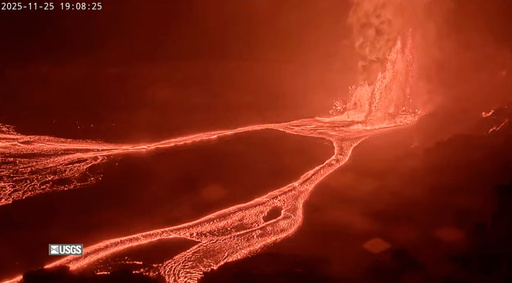HONOLULU
The on-and-off volcanic eruption that’s been dazzling residents and visitors on Hawaii’s Big Island for nearly a year is back. Kilauea sent fountains of lava soaring 400 feet into the air on Tuesday. The molten rock was confined within Kilauea’s summit caldera inside Hawaii Volcanoes National Park. No homes were threatened. It’s the 37th time Kilauea has shot lava since last December, when the current eruption began. The latest lava display was preceded by sporadic spattering and overflows that began on Friday. Each eruptive episode has lasted about a day or less.
HONOLULU (AP) — The on-and-off eruption that's been dazzling residents and visitors on Hawaii's Big Island for nearly a year resumed Tuesday as Kilauea volcano sent fountains of lava soaring 400 feet (122 meters) into the air.
The molten rock was confined within Kilauea’s summit caldera inside Hawaii Volcanoes National Park, the U.S. Geological Survey said. No homes were threatened.
It's the 37th time Kilauea has shot lava since last December, when the current eruption began.
The latest lava display was preceded by sporadic spattering and overflows that began Friday. Each eruptive episode has lasted about a day or less. The volcano has paused for at least a few days in between.
In some cases, Kilauea's lava towers have soared as high as skyscrapers. The volcano has generated such tall fountains in part because magma — which holds gases that are released as it rises — has been traveling to the surface through narrow, pipelike vents.
Kilauea is on Hawaii Island, the largest of the Hawaiian archipelago. It's about 200 miles (322 kilometers) south of the state’s largest city, Honolulu, which is on Oahu.
It's one of the world’s most active volcanoes and one of six active volcanoes in Hawaii.





